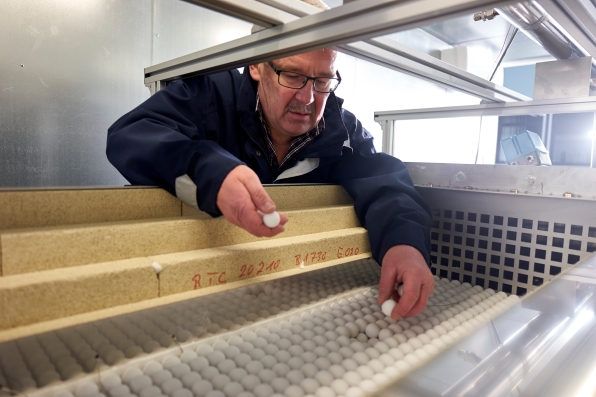Last December a storm with a low-pressure zone called Theresa created a massive surge of power (31,000 megawatts to be exact) to be fed into the grid temporarily in Germany. The problem was that most of this free energy was lost because there was nowhere sufficient in place that was able to store it. To try and combat that issue, Siemens have devised a plan that involves developing a new energy storage system called Future Energy Solution (FES) in collaboration with the Hamburg University of Technology and municipal utility company Hamburg Energie.
The new system is being funded by Germany’s Ministry of Economic Affairs and will store excess power generated by wind parks for several hours at a time which will solve the problem of wasted energy like with Theresa. It’s called the Hamburg System and it works by converting surplus energy into heat which is then blown into an insulated bin of rocks heating the rocks to temperatures of more than 600 degrees Celsius. When there’s demand for energy the rocks heat an airflow which in turn drives a steam cycle and new electricity is produced as a result.

It’s a very cost-effective, and environmentally friendly process and could potentially be used to supplement existing storage systems. Siemens Corporate Technology (CT) has been heavily involved in the concept of the FES and has been running a test facility in Erlangen since 2016. CT project manager, Vladimir Danov, advised, “The thermal storage system is the centerpiece of the Hamburg facility. It’s very important that we understand the heat transport phenomena within the storage system so that we can increase its overall efficiency and build a full-scale power station.”
The Hamburg facility is around five meters long and instead of stones, the container houses around 13,000 ceramic balls. According to Danov, the advantage of using these balls is that they’re all the same shape and size, which makes calculating the hat transport and other processes within the bin easier. “However, we will use ceramic balls only in the current test phase. In the next stop we will fill the storage system with natural stones so that we can study how irregular shapes and a variety of material data influence heat transport,” says Danov.


But, the biggest challenge lies not in whether to use ceramic balls or stones, but in how to measure heat transport processes within the container. Currently, researchers have around 50 thermocouples installed in the storage system to try and obtain findings that are as detailed as possible. “Our findings will make it easier to scale up the facility in the future,” says Jochen Schafer, Head of the Distributed Energy Systems and Heat Conversion Research Group at CT. But before that can happen, a complete facility needs to be in place that includes technology for transforming heat back into electricity. Neither the Hamburg and Erlangen prototypes have this but a new facility due to be built in Hamburg in 2018 will.
More News to Read
- New Cancer Treatment May Be Having the Reverse Effect on Some Patients
- Reusable Rockets are the New ‘In Thing’ Apparently, Russian Wants Them too
- The Event Horizon Telescope Aims to Capture an Image of a Black Hole
- Can We Forecast Global Dust Storms on Mars?
- Can the New ” Light Phone ” Cure Our Smartphone Addiction?











